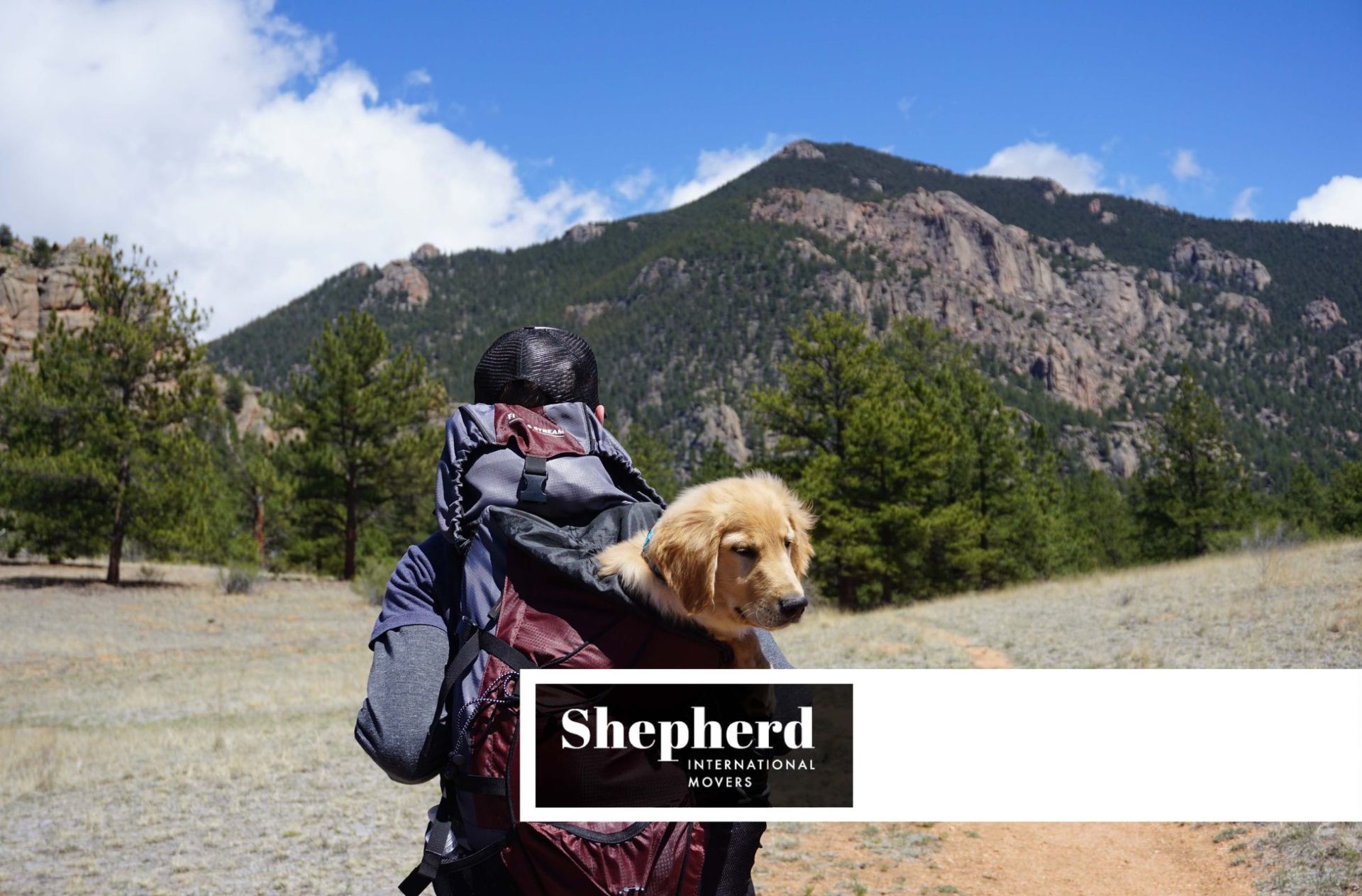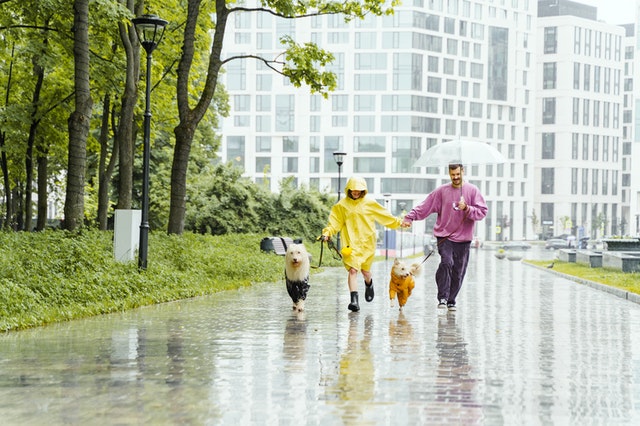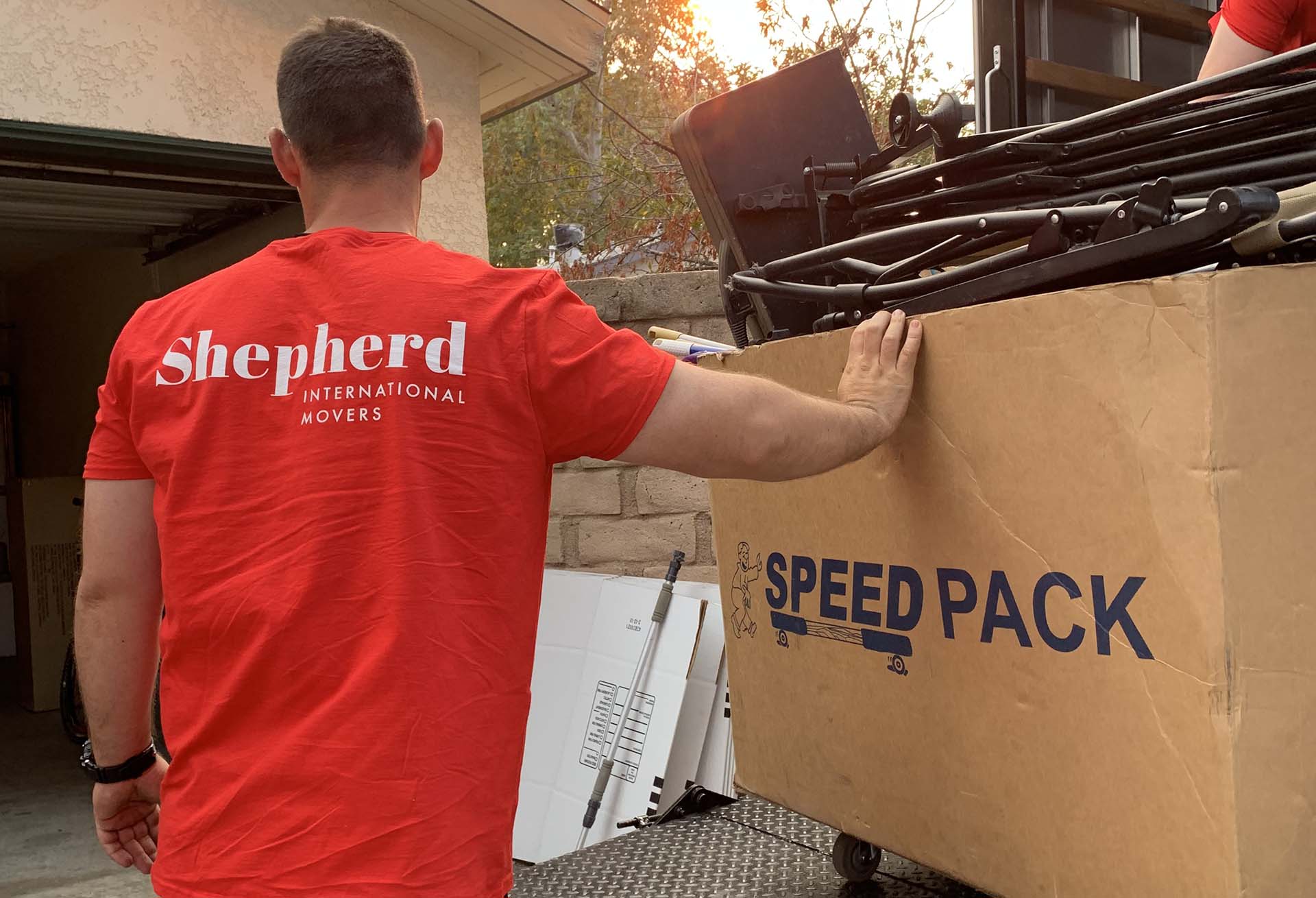

There are 2 million pets that travel on commercial flights every year. And the number is increasing each year. And people moving with dogs cover a huge part of this number. Still, even if moving overseas with pets has never been more available, the whole procedure is complicated and difficult, but not impossible.
Relocating across the world with pets is not as simple as shipping your car. You need to follow the rules and regulations and think about how your pet will endure this transition. But in the end, this is something you must do because we all know living overseas without your furry friend will be unimaginable and heartbreaking. And for these reasons, many air companies, airports, and countries are doing all in their power to make this relocation possible and smooth. And even though there is room for improvements, it is good to know that international moving with dogs is possible and doable.
Moving With Dogs All About Documentation You Need to Know
When moving abroad is not possible without the right documents for traveling, the same rules apply to your pup. For starters, your doggy will have to microchip. If it doesn’t have one do this immediately, and if it does, make sure to update information on it. You will have an address and phone where you will be reachable in case your best friend gets lost. The other thing you need to have is a pet’s passport. This passport will have all the vaccinations certificates your pup received during the past years.
Talk to the Air Company and Learn the Requirements for Transportation
No matter your reason for the move, relocation abroad will demand serious preparations. One of the things on your relocating checklist will be to contact airlines and check the requirements for animal transportation. Most companies will allow you to bring a small pup (up to 17 pounds) in a cabin with you. Larger breeds will likely have to travel in the carrier, which will go with your baggage – that is for your dog’s safety. Also, the smaller breeds are allowed in a cabin only in the soft-sided kennel. Ensure to inform your airline about pup relocation on time because a limited number of animals are allowed to be in the cabin.
See Rules and Regulations About Dog Migration in Your Country of Choice
Relocating to Dubai with a canine will not be the same as going to Argentina or some other country in the world. Every county has different rules regarding the import of animals. Therefore, no matter if you plan to retire in Europe or maybe live in Vancouver, you will have to check that country’s regulations before collecting the papers. For example, if you are planning to live in the EU, your dog will have to have an ISO microchip. Other chips are not readable.
Also, if you are relocating to Hawaii or some of the rabies-free countries, you will need a blood test and rabies antibodies proof. Some countries even prohibit certain breeds from entering. Brazilian Fila, Dogo Argentino, Japanese Tosa, Perro de Presa Canario, American Pit Bull Terrier (any type,) and hybrid species (any type) are all banned in New Zealand. Check every country’s requirements and restrictions on the Animal and Plant Health Inspection Service website.

Prepare Your Pup for the Move – First Visit Your DVM
Before you even begin with paperwork and travel arrangements, you need to see if your doggy is in good health. Aside from the fact they need to be checked for the illnesses they can transfer to humans, parasites, and rabies, animals need to be healthy when entering the airplane. You will need approval from your vet that the doggy is fit for this kind of stress. And if you ask yourself, “how do I prepare my dog for moving,” your vet will give you all the answers. He will advise you based on the health condition of your pet what your steps should be.
Buy Necessary Supplies for the Transition
Once you are cleared for departure, it is time to do some shopping. First, you will need a carrier that meets your company’s standards. Secondly, you will need diapers and a leash. Also, see what weather conditions will be and avoid extreme weather conditions. The company can even refuse to transport your pet if conditions are bad. All in all, always be mindful of where you are going. If you are relocating to Toronto in the middle of the winter, buy some winter clothing for your furry companion.
Help Your Dog With Anxiety Medications
You already booked your movers for overseas shipping of your belongings and prepared your car for overseas vehicle shipping when you start to realize you are actually relocating and your stress is reaching the melting point. Then you might begin to wonder if you’re that stressed out, how will a doggy handle this transition? Questions like “is moving stressful for dogs” and “how does moving affect a dog” are probably rushing through your mind. And that’s fine – you care for your furry friend. But you can stop worrying. Yes, it will be stressful, but there are things you can do to reduce this stress to a minimum. For example, ask your vet about anxiety medications you can start giving him.
Get Him Used to a Carrier
Another thing you can do to reduce the stress during transport is to get the animal familiar with its surroundings. Buy a carrier at least one month before your move, and make your furry friend sleep there every night. This carrier should become its favorite place, its new spot.

How Long Does It Take for a Dog to Adjust to a Move?
Adjusting to a different country will be difficult for you but even more so for your canine. The period of adjustment will only depend on the amount of effort and attention you invest. The crucial thing is to make the animal feel safe and comfortable, and once it realizes nothing crucial hasn’t changed in its life, it will be a happy pup again. Also, start training it for a strict bathroom routine. Take it on a walk in the morning and the evening to avoid the mess in the carrier later on. It would be good if you could arrange your flights to be between two bathroom schedules.

What to Do One Week Before Your Move and on Your Relocation Day
A week before your relocation is time to start packing your belongings. If you are not planning to ship by air, you should put aside some essentials for your tail-wagger because you will wait a couple of days for your belongings to arrive. Put its favorite toys, blanket, pillow, and bowls in your bag of essentials. This way, an adjustment will be much easier. Also, if it is allowed (by the customs,) bring its food as well. Adjusting to a different food will be long, and the best way to achieve it is to mix the new food with the old one.
Important note: while packing, create a space in your house where your pup will be. That way, the packing will be much easier (if you haven’t hired an international moving company and its packing service, of course.)

Help Your Canine to Adjust to a New Home and City
Your relocation is over, and you are in your home in a different city trying your best to break a language barrier. Your furry friend is exploring a place, trying to figure out what is happening. As soon as you set foot in your home, you should show your friend its place and take it for a walk. You will kill two birds with one stone this way. Not only will your furry friend adjust much faster, but you will also break this barrier much easier while starting conversations with other pet owners. If possible, find another vet and take the animal there just to check if everything is fine. If you don’t have the strength to do this as soon as you land, research and see where the nearest vet is, just for the case of an emergency.
Keep Up the Routines
It doesn’t matter if you have relocated to Seoul or to some of the best cities in Europe – your dog’s routines must stay the same. And if you’ve relocated to the west, overcoming jet lag for the animal will be much easier. They will feel tired during the day, but you will have to make them go outside no matter what. If you let them sleep off and go to the bathroom when used to it, you will have a hard time adjusting to a normal schedule.
Set New Space in Home Just for Your Tail-Wagger
We already mentioned that one of the first things you must do once you set foot in your new home is to let them sniff around and explore their surroundings. So, put their favorite pillow and toy in one place to let them know this is their spot.
Introduce Him to the Other Dogs
Whether you relocate to some of the best places to live or to some far island in the Bahamas, there must be other doggies there. So, go online and try to find pet-friendly places or parks. Take your pup there and let it play and socialize with other animals. And if you are relocating abroad alone, your furry friend is an excellent means to meet new people and, who knows, maybe make some friends. Take it for a walk around the block – statistically, you will have to stumble upon another canine. This way, your furry friend will forget about the relocation stress much faster. And in the end, it will be a happy pup. Check this video for more tips.
Last but Not Least – Give It Tons of Love and Keep It Entertained
You will need a lot of patience in taking care of your pup. You will feel like you are starting with training all over again. But with time and a lot of love, your tail-wagger will be as good as new. And even though relocation is stressful and emotional, you will feel much better once you see it jumping around and being a good boy. And last but not least, your home will feel more like home with a pup inside. Furthermore, even if the procedure for relocating is complicated and time-consuming, you will gain much more by doing this than by leaving your companion behind.






